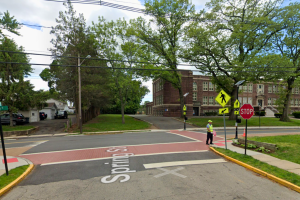This article is shared from the New Jersey State Policy Lab. For more information about NJ’s Policy Lab, visit Measuring What Matters: Rethinking School Zone Safety Metrics.
Safe Routes to School (SRTS) is a national effort that aims to provide safer conditions for school travel and to encourage more walking and cycling. SRTS programs first started in the United States in the 1990s in a few cities and launched statewide in New Jersey in 2003. In 2005, Congress approved funding for implementation of Safe Routes to School programs in all 50 states and the District of Columbia. Since its inception, the national SRTS program has provided more than $1 billion in funding in all states to support infrastructure improvements and programming to make it safer and easier for children to walk and bicycle to and from school.

For as long as the SRTS program has been in place, the National Center for Safe Routes to School has recommended the use of student arrival and departure travel tallies or parent surveys before and after the implementation of a project to measure how students get to school. This data, in many instances, was both difficult to collect and often imprecise, leaving gaps in understanding projects’ impacts. Most schools did not measure the changes in travel activity before and after an SRTS infrastructure project was built. Furthermore, information on the mode of travel to and from school may not have captured the actual safety risks students encountered, such as exposure to high-speed traffic or wide intersections, which is crucial to assess the true effectiveness of these projects.
